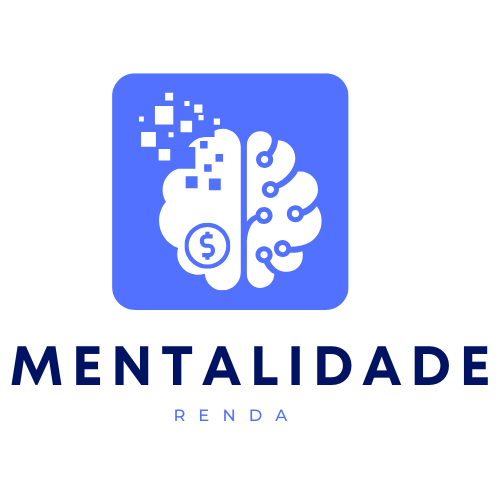In today’s fast-paced work environment, efficiency, productivity, and staying organized are key to success. Artificial Intelligence (AI) has the potential to revolutionize the way we approach work by automating repetitive tasks, enhancing decision-making, and helping us stay focused. In this article, we’ll explore some AI tools that can help you improve your performance at work, enabling you to accomplish more in less time and with higher quality results.

1. AI for Time Management and Task Prioritization
Managing time efficiently is crucial for peak performance. AI tools can help you organize tasks, set priorities, and stay on track by providing reminders and even suggesting the best times to work on specific projects.
How AI helps with time management:
- RescueTime: RescueTime uses AI to track how you spend your time on different tasks, applications, and websites. It provides detailed reports on your productivity, helping you identify areas for improvement and optimize your daily schedule.
- Trello with Butler: Trello’s Butler feature uses AI to automate and prioritize tasks. It can create lists, assign deadlines, and notify you when tasks are overdue, ensuring that you stay organized and focused on what matters most.
- Todoist: Todoist helps you categorize and prioritize tasks. The AI analyzes your workload and suggests which tasks should be completed first, based on urgency and deadlines. It also tracks progress and sends reminders to keep you on track.
Why use it:
AI-powered time management tools help you maximize your productivity by ensuring that you stay organized and focused, allowing you to allocate time to high-priority tasks and avoid distractions.
2. AI for Enhancing Communication and Collaboration
Effective communication is a vital skill in any workplace, and AI can significantly streamline communication and collaboration by organizing messages, suggesting responses, and even helping you stay in touch with colleagues and clients.
How AI helps with communication:
- Slack with Workflow Automation: Slack uses AI to automate communication processes. It can send reminders, organize channels, and help you prioritize messages based on importance. AI can also help you schedule meetings and send automatic follow-up reminders.
- Grammarly: Grammarly is an AI-powered writing assistant that helps you improve the clarity, tone, and grammar of your emails, reports, and other written communications. It provides real-time suggestions for making your writing more effective and professional.
- Zoom with AI Features: Zoom now integrates AI to improve virtual meetings. AI-powered features include real-time transcription, meeting summarization, and background noise reduction, helping you communicate more clearly and efficiently in virtual environments.
Why use it:
AI communication tools help you stay on top of emails, messages, and meetings, making your interactions more efficient and reducing the time spent on back-and-forth communication.
3. AI for Automating Repetitive Tasks
Automating routine tasks can free up valuable time, allowing you to focus on higher-level work. AI-powered automation tools can handle repetitive, time-consuming tasks like data entry, scheduling, or document management.
How AI helps with task automation:
- Zapier: Zapier connects apps and automates workflows by setting up triggers and actions. For example, it can automatically update your task management tool when an email is received or add calendar events based on information from other apps, reducing the need for manual data entry.
- IFTTT (If This Then That): IFTTT uses AI to link apps and devices, automating tasks across different platforms. It can automatically send reports, update spreadsheets, or even adjust your home’s lighting and temperature when you’re not at the office.
- Microsoft Power Automate: This AI tool automates workflows within Microsoft apps, allowing you to automate processes like sending emails, creating reports, and updating data across multiple platforms, increasing efficiency and reducing manual work.
Why use it:
AI-powered automation tools help eliminate repetitive tasks, saving time and allowing you to focus on more strategic and creative aspects of your work.
4. AI for Data Analysis and Decision-Making
Analyzing data and making informed decisions is critical to improving performance. AI tools can process large datasets quickly, identify trends, and provide actionable insights that help you make better decisions faster.
How AI helps with data analysis:
- Tableau: Tableau uses AI to generate powerful data visualizations, helping you analyze complex data quickly. It automatically identifies trends, outliers, and patterns, making it easier to present data-driven insights to your team or clients.
- Power BI: Microsoft’s Power BI uses AI to create dashboards, analyze business performance, and suggest insights based on historical data. It can help you track key performance indicators (KPIs) and make data-backed decisions.
- Google Analytics: Google Analytics uses AI to track website and app data, offering insights into user behavior and engagement. By analyzing traffic and conversion patterns, it can help you optimize digital marketing strategies and make informed business decisions.
Why use it:
AI-driven data analysis tools allow you to quickly process complex information and identify trends, helping you make smarter, more informed decisions that improve work outcomes.
5. AI for Personalizing Learning and Skill Development
AI can be an excellent tool for ongoing professional development. It can recommend courses, track your progress, and help you develop new skills by offering personalized learning paths based on your interests and goals.
How AI helps with skill development:
- Coursera and Udemy: Platforms like Coursera and Udemy use AI to recommend courses based on your previous learning patterns and areas of interest. AI suggests personalized learning paths to help you acquire new skills relevant to your career goals.
- LinkedIn Learning: LinkedIn Learning uses AI to suggest courses based on your job role, career aspirations, and skills gap. It helps you focus on areas that will enhance your performance and career growth.
- Duolingo: For language learning, Duolingo uses AI to personalize lessons based on your progress and performance. The app adapts the difficulty of exercises and suggests new vocabulary, helping you learn at your own pace.
Why use it:
AI-powered learning platforms offer personalized learning experiences, allowing you to develop new skills that enhance your job performance and prepare you for new career opportunities.
6. AI for Enhancing Creativity and Problem-Solving
AI can help boost creativity by providing new ideas, offering creative suggestions, and even generating content. Whether you’re brainstorming for a new project, drafting documents, or solving problems, AI can enhance your creative thinking and productivity.
How AI helps with creativity:
- Jasper (formerly Jarvis): Jasper is an AI writing assistant that can help generate ideas, write articles, create content for blogs or social media, and even improve the clarity and tone of your writing. It provides inspiration and drafts based on your instructions.
- Canva: Canva uses AI to help you create professional graphics and designs. Its AI-powered features include design suggestions, automatic photo enhancements, and templates that make it easier to produce visually appealing content without graphic design experience.
- Trello and Miro: Trello and Miro use AI to help teams collaborate, brainstorm ideas, and manage projects more efficiently. AI can suggest the best methods for organizing work, tracking progress, and offering creative solutions to project challenges.
Why use it:
AI tools for creativity help spark new ideas and improve content creation, allowing you to solve problems more effectively and develop high-quality work in less time.
7. AI for Customer Service and Relationship Management
In the workplace, providing excellent customer service and managing relationships effectively is essential. AI can help automate customer service tasks, suggest responses, and improve customer interactions.
How AI helps with customer service:
- Chatbots: AI-powered chatbots (e.g., Drift, Intercom) automate customer inquiries, offering instant responses to frequently asked questions. These tools can handle basic customer service tasks, allowing you to focus on more complex queries.
- Zendesk: Zendesk uses AI to help streamline customer support by automatically categorizing and responding to tickets, suggesting answers, and routing inquiries to the appropriate team members. AI can improve the speed and accuracy of customer service.
- HubSpot: HubSpot’s AI tools help manage customer relationships by automating follow-ups, providing personalized email marketing, and offering suggestions for improving communication and engagement.
Why use it:
AI-powered customer service tools help automate routine interactions, improving response time and efficiency while freeing up time for more personalized, high-value communication.
Conclusion
AI tools are revolutionizing the workplace by improving efficiency, enhancing decision-making, and automating repetitive tasks. Whether it’s managing time, improving communication, analyzing data, or enhancing creativity, AI can significantly boost your performance at work.
By leveraging AI tools like RescueTime, Grammarly, Trello, and Jasper, you can streamline your daily tasks, optimize workflows, and increase productivity. Incorporating AI into your work routine helps you stay ahead of the curve, work smarter, and achieve better results with less effort.
